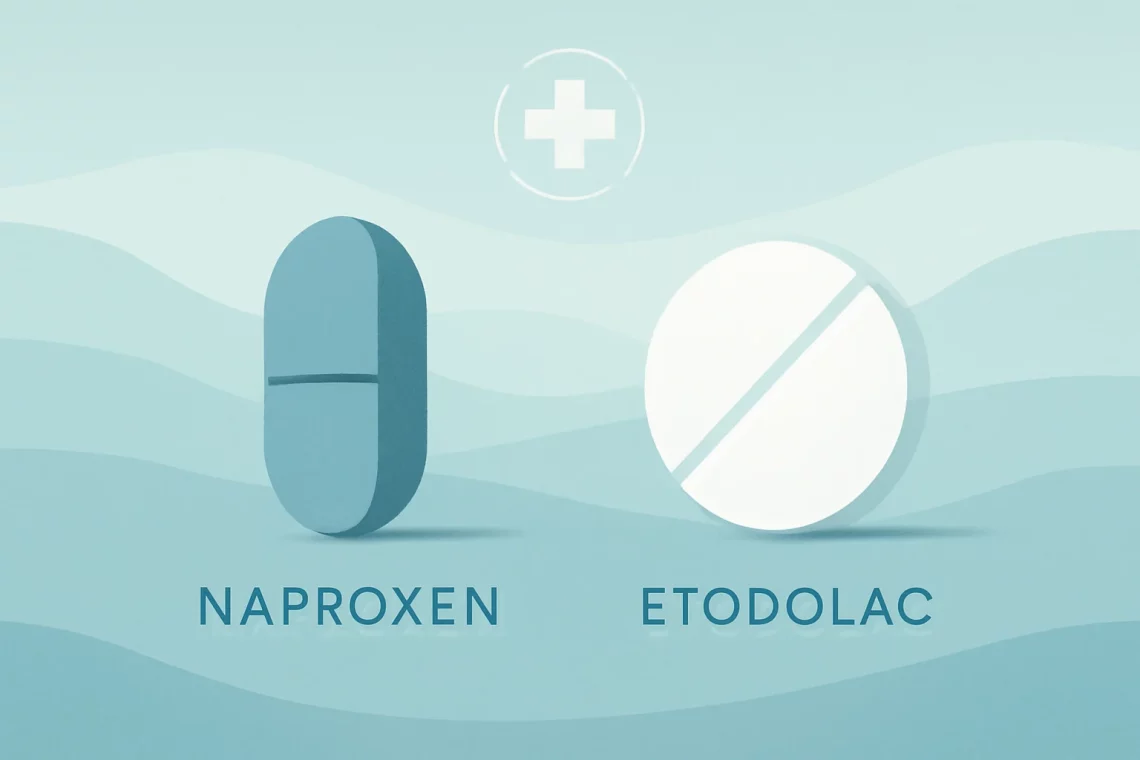-
Clonazepam vs Diazepam: Key Differences and Uses Explained
Clonazepam and diazepam are two medications belonging to the benzodiazepine class, widely used for their anxiolytic, anticonvulsant, and muscle relaxant properties. Both drugs have been prescribed for various conditions, including anxiety disorders, panic attacks, and seizures. Their effectiveness and the specific situations they are prescribed for can vary widely, making it crucial to understand their unique characteristics, benefits, and potential side effects. As mental health awareness grows, understanding the differences between these medications becomes increasingly important for patients and healthcare providers alike. While both clonazepam and diazepam serve similar purposes, they also have distinct pharmacological profiles, which can influence treatment decisions. The choice between clonazepam and diazepam often depends on…
-
Diclofenac vs Meloxicam: Which Pain Reliever Is Right for You?
Diclofenac and meloxicam are two commonly used non-steroidal anti-inflammatory drugs (NSAIDs) that play a significant role in managing pain and inflammation. These medications are often prescribed for conditions such as arthritis, muscle pain, and various forms of acute pain. While both diclofenac and meloxicam share similar mechanisms of action—primarily inhibiting cyclooxygenase enzymes to reduce the production of prostaglandins—they differ in various aspects, including their pharmacokinetics, usage, and side effects. Choosing between these two medications can be challenging, especially for patients who are looking for effective pain relief without compromising their health. Understanding the distinctions and similarities can empower patients and healthcare providers to make informed decisions tailored to individual needs.…
-
Diazepam vs Clonazepam: Which Medication Is Right for You?
In the realm of mental health and pharmacology, few medications have garnered as much attention as benzodiazepines, particularly Diazepam and Clonazepam. These drugs are widely used for their anxiolytic, anticonvulsant, and muscle relaxant properties. Both have carved out significant roles in treating various disorders, including anxiety, panic attacks, and certain types of seizures. However, their differences in mechanism, efficacy, and side effects can often lead to confusion for patients and healthcare providers alike. Understanding these differences is crucial for making informed decisions about treatment options. As the conversation around mental health continues to evolve, the importance of choosing the right medication has become more pronounced. Patients often find themselves navigating…
-
Benzonatate vs Codeine: Understanding Their Differences and Uses
Benzonatate and codeine are two medications commonly used to manage coughs, but they operate in distinctly different ways and have varying implications for patient care. Benzonatate is a non-narcotic cough suppressant that works by numbing the throat and lungs, reducing the urge to cough. On the other hand, codeine is an opioid that not only relieves cough but also serves as a pain reliever. Understanding the differences between these two medications is crucial for patients who may be considering their options for cough relief. Coughing can be a bothersome symptom caused by various conditions, including allergies, colds, and respiratory infections. Both benzonatate and codeine have their places in treatment protocols,…
-
Cephalexin vs Clindamycin: Which Antibiotic is Right for You?
Cephalexin and clindamycin are two antibiotics that are commonly prescribed for various bacterial infections. While both medications are effective in treating infections, they differ in their mechanisms of action, the types of bacteria they target, and their side effects. Understanding these differences is crucial for both healthcare providers and patients to ensure the appropriate antibiotic is chosen for a specific infection. In a world where antibiotic resistance is an increasing concern, selecting the right medication becomes even more vital. This article aims to delve into the characteristics of cephalexin and clindamycin, examining their uses, effectiveness, and potential side effects. By the end of this discussion, readers will have a clearer…
-
Benzonatate vs Tessalon Perles: Which Cough Suppressant is Better?
Benzonatate and Tessalon Perles are two commonly prescribed medications used to manage cough symptoms. While both have similar applications, they differ in their active ingredients, mechanisms of action, and side effects. Understanding these differences can help patients make informed decisions about their treatment options. Coughing is a reflex that helps clear the airways of irritants, but chronic coughing can be uncomfortable and disruptive. Consequently, effective treatment is crucial for those suffering from persistent coughs due to various underlying conditions, such as allergies or respiratory infections. In recent years, the demand for effective cough suppressants has led to a more significant focus on medications like benzonatate and Tessalon Perles. As patients…
-
Vraylar vs Seroquel: A Comprehensive Comparison of Two Medications
Vraylar and Seroquel are two medications commonly prescribed for the treatment of mental health conditions, particularly bipolar disorder and schizophrenia. Both drugs play a significant role in managing symptoms, but they differ in their mechanisms of action, side effects, and overall effectiveness. Understanding these differences can be crucial for patients and healthcare providers when determining the most appropriate treatment options. While Vraylar, an atypical antipsychotic, works primarily by modulating dopamine and serotonin receptors in the brain, Seroquel, another atypical antipsychotic, has a broader range of receptor activity. This can lead to varying outcomes and experiences for patients taking these medications. It’s essential to explore the characteristics of each drug, their…
-
Tramadol vs Codeine: Which Pain Relief Option is Right for You?
Tramadol and codeine are two commonly prescribed medications used to manage pain. While they belong to different classes of drugs, both are effective in alleviating moderate to severe discomfort. Understanding the differences and similarities between these two medications is crucial for patients and healthcare providers alike. The choice between tramadol and codeine can significantly impact a patient’s pain management strategy, as well as their overall health and well-being. With the rise of chronic pain conditions, the demand for effective analgesics has increased, making it essential to explore the unique properties of each medication. Tramadol, a synthetic opioid, works by altering the way the brain and nervous system respond to pain.…
-
Tramadol or Codeine Which Pain Relief Option Is Right for You
Tramadol and codeine are two commonly prescribed medications that belong to the class of opioids. They are primarily used for pain management, but they have distinct differences in their formulations, efficacy, side effects, and potential for abuse. Understanding these differences is vital for patients and healthcare providers alike, as they navigate the complexities of pain treatment. The growing concern over opioid misuse has led to increased scrutiny of these medications, making it essential to provide accurate information about their uses and risks. Both tramadol and codeine can be effective in treating various types of pain, yet they also carry the potential for dependency and other adverse effects. This article aims…
-
Naproxen vs Etodolac: Which Pain Reliever Is Right for You?
Naproxen and etodolac are both nonsteroidal anti-inflammatory drugs (NSAIDs) that are commonly used to manage pain and inflammation. As part of a broader category of medications, they are often recommended for a variety of conditions, including arthritis, menstrual cramps, and other musculoskeletal disorders. While both medications aim to alleviate discomfort and reduce inflammation, they possess distinct properties and mechanisms of action that may make one more suitable than the other depending on the patient’s specific needs. Understanding the differences between naproxen and etodolac is essential for both patients and healthcare providers. This knowledge can lead to more informed decisions regarding treatment options, enhancing the overall effectiveness of pain management strategies.…






































